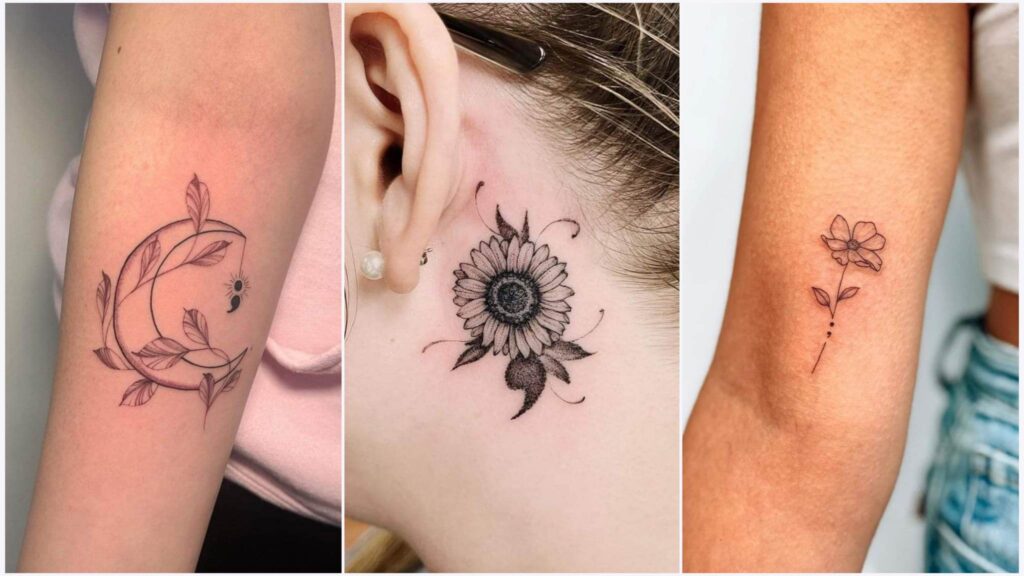Tattoos have long been more than just permanent ink on skin; they are stories etched into the very fabric of a person’s being, a form of self-expression that transcends cultural and linguistic barriers. And in the intricate tapestry of tattoo culture, the semicolon has emerged as a poignant symbol of a battle fought, a pause that wasn’t a stop, and the ongoing narrative of mental health.
From Punctuation to Purpose
The humble semicolon, once a mere grammatical convention, now boasts a narrative all its own. This tiny symbol, which denotes a continuation where a period might have closed a sentence, serves as a stark reminder that our stories are far from over, despite the struggles we face. Project Semicolon, the movement behind the trend, has artfully encouraged individuals to take their darkest moments and turn them into powerful continuations, the starting points for further personal growth.
The Essence of the Comma Story
The semicolon’s rise to prominence can be traced back to Amy Bleuel, who founded Project Semicolon in 2013. Amy, who had personal experience with the harrowing effects of mental health issues, selected the semicolon as a beacon to guide people through their journeys with depression, suicide, and self-harm, and it quickly gained traction globally. The movement’s inception was an outgrowth of Amy’s own brush with suicide and her father’s untimely death—a poignant commemoration of the connection between the struggles of many and her family’s experience.
A Canvas of Stories Shared
The semicolon tattoo is more than just a fad; it’s an enduring mark of the wearer’s tumultuous past and their conscious choice to move forward. For wearers, it serves as a personal talisman — a piece of their soul exposed to the world, a declaration of perseverance in the face of one’s inner demons. With each inking, individuals broadcast a part of their life, stories adorned with semicolons that echo through the collective consciousness of the movement.
Bridging the Gap Through Ink
For those struggling with mental health, the semicolon symbol is of immeasurable significance, often bridging the gap between feeling alone and knowing you are part of a vast community that understands, empathizes, and supports. The very act of sharing this inked motif with countless others is a unifying experience that highlights the universality of human struggle.
Strength in Unity
In what was once a deeply individualized experience, the semicolon tattoo has fostered a sense of strength in numbers. Wearers are part of a living, breathing exhibit of solidarity, without uttering a single word. This silent language of tattoos speaks volumes, acknowledging the shared pain and the collective courage to carry on.
Personal Expression Redefined
Every tattoo is a statement of personal identity, but the semicolon tattoo goes beyond marking one’s individuality. It is a declaration of a common plight, yet one that is unique in its details. In this sense, the semicolon tattoo encapsulates the beauty of shared expe-riences, each unique, each valuable, each contributing to the rich tapestry of the mental health discussion.
A Call to Action and Advocacy
Tattoo parlors are now safe spaces where patrons not only seek to express their struggles but also find education, resources, and a sense of community. The semicolon tattoo serves as a literal conversation starter, initiating dialogues about mental health and combating the stigma that often shrouds it.
The Parlor as a Platform
Tattoo artists have become allies in the quest for mental health awareness, oftentimes using their platforms to educate and support their clients. They function not only as artisans but as advocates for the causes their ink now represents, making each session a moment for individual transformation and societal enlightenment.
Moving Beyond the Ink
With every semicolon tattoo inked, a ripple effect is set in motion—one that extends into homes, workplaces, and beyond. The wearers do not simply sport a new piece of body art; they carry within them a purpose to spread awareness, to be a shoulder to lean on, and to be a voice for others who may not have found their own yet.
The Journey Continues
The semicolon movement shows no signs of slowing down. It has become an integral aspect of the mental health conversation, serving as a testament to human resilience and the power of community. Those who choose to permanently mark themselves with this symbol are participants in a narrative wider than themselves, yet intimately tied to their own stories.
Writing Our Collective Future
The semicolon has redefined what it means to relate to others through symbolism and ink. It encourages us to write, rewrite, and continue the stories of our lives, embedded with the hope and resilience that every struggle cultivates. It’s a small symbol with profound implications, and it is unlikely to lose its significance as long as individuals find solace, strength, and unity in its lines.
Tattoo of Unity
The semicolon tattoo is more than a marked moment in time; it is a pledge, a collective promise that resonates through all those who bear it. Every new semicolon etched is a vote for continued advocacy, a commitment to living, and a standalone story that is also part of a much larger tale.













